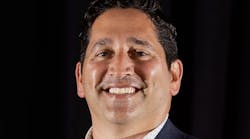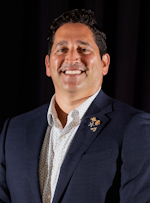What CE have you taken that has had the most positive impact on your practice?
I often find myself fielding this question, especially when conversing with recent dental graduates. The landscape of continuing education in our profession is a captivating one, heavily influenced by the deluge of trends and courses touted on platforms like Instagram and Facebook. It’s tempting for many dentists to dive headfirst into profound postgraduate dental education, but here’s a piece of advice I've come to cherish: The first three to five years should be dedicated to mastering the fundamentals, bread-and-butter dentistry, honing your skills, and discovering how to boost efficiency while minimizing the need for costly remakes.
It's during this early phase that you’re likely to make a few mistakes—and that’s perfectly okay. These blunders, with answers sometimes shrouded in complexity, are your stepping stones to growth. They are your lessons, your crucibles of experience.
Once you’ve had the opportunity to navigate these waters and encountered situations where the “why” isn’t always straightforward, it’s time to consider elevating your expertise. That’s where institutions like the Pankey Institute and the Kois Center come into play. These esteemed centers are the gateways to genuine experiential education, places where you can delve deep into the intricacies of our profession and find the answers to those complex questions that have piqued your curiosity.
What’s your best advice for keeping the morale of your team up?
This question holds a special place in my heart because, quite often, the answer lies within the dentists themselves. One of the most invaluable pieces of advice I received as a young practice owner was the unwavering commitment to nurturing emotional intelligence (EI). If you’re looking to embark on this journey, I wholeheartedly recommend starting with Daniel Goleman’s illuminating book, Primal Leadership. Goleman masterfully dissects EI into two essential domains: personal competence, which revolves around how we manage ourselves, and social competence, which delves into how we navigate our relationships.
Personal competence is akin to a profound self-awareness of our emotions, an acute understanding of our strengths and limitations, and a steadfast sense of self-worth. It involves the art of self-management, where we learn to control disruptive emotions, embrace transparency, foster honesty and integrity, strive for performance improvement, adhere to inner standards of excellence, stay ever ready to act, and consistently adopt a glass-half-full perspective. Self-aware leaders possess a deep understanding of their values, goals, and dreams; they are unwaveringly clear about their direction and purpose.
On the other hand, social competence encompasses social awareness, which is primarily about empathizing, intuitively sensing the emotions of others, and comprehending their unique perspectives. It extends to the realm of relationship management, which involves inspiring leadership, the art of creating positive influence, the ability to nurture the growth of others, and the skill of cultivating teams that thrive through collaboration. Here, empathy takes center stage by signifying your commitment to considering your employees’ emotions thoughtfully and using that insight to make informed decisions. In essence, your staff yearns for a leader who exhibits vulnerability, one they can trust implicitly, and who assures them that their concerns are not just heard but deeply valued.
How do you learn to take great photographs for social media?
My cameras are the lifeblood of my daily practice. In our state-of-the-art dental office, all 12 of our operatories are equipped with cutting-edge intraoral cameras, transforming the way we engage with our patients. We understand that most people are visual learners, and we don’t rely on generic stock photos; instead, we use real-time visuals from our intraoral cameras to spark compelling conversations and educate our patients based on their unique circumstances.
You might also be interested in: Dental photography on social media: The good, the bad, and points to consider
My trusty DSLR is more than just a tool; it’s an extension of my expertise. I can’t imagine practicing without it. In the realm of contemporary, facially driven treatment planning, photography stands as both the foundation and pinnacle. It’s the language we use to communicate with our ceramists, the foundation of our case planning, and the key to unlocking our patients’ understanding.
Mastering dental photography is not just a skill; it’s a game changer. It only takes one specialized dental photography class and a dedicated commitment to elevate your practice. I highly recommend enrolling in either the “Mastering Photography” course at the Pankey Institute or “Collideoscope” with the renowned instructors Drs. Adamo Notarantonio and Amanda Seay. These courses delve into the fundamentals of camera use, the art of capturing breathtaking images, protocols for intra- and extraoral photography, and how to harness photography for the digital age, including maximizing its potential on social media.
Follow Dr. Mazzola on Instagram at @christopherdmazzoladds and visit his website.
Editor's note: This article appeared in the November 2023 print edition of Dental Economics magazine. Dentists in North America are eligible for a complimentary print subscription. Sign up here.







